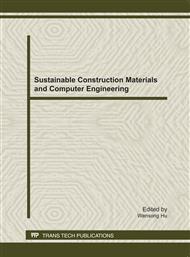[1]
D P Thambiratnam, F. ASCE, B J Clark, et al. Performance of a rollover protective structure for a bulldozer[J]. Journal of Engineering Mechanics, 2009, 135(1): 31-40.
DOI: 10.1061/(asce)0733-9399(2009)135:1(31)
Google Scholar
[2]
Albertsson P, Falkmer T, Kirk A, et al. Case study: 128 injured in rollover coach crashes in Sweden—Injury outcome, mechanisms and possible effects of seat belts[J]. Safety Science, 2006, 44(2): 87-109.
DOI: 10.1016/j.ssci.2005.07.005
Google Scholar
[3]
Michael McCann. Heavy equipment and truck-related deaths on excavation work sites[J]. Journal of Safety Research. 2006, 37: 511-517.
DOI: 10.1016/j.jsr.2006.08.005
Google Scholar
[4]
Timothy R. Driscoll, James E. Harrison, Clare Bradley et al. The role of design issues in work-related fatal injury in Australia [J]. Journal of Safety Research, 2008, 39: 209-214.
DOI: 10.1016/j.jsr.2008.02.024
Google Scholar
[5]
Deb A, Chou C C. Headform Impact Safety Design Through Simulation and Testing[C]. SAE Paper No. 2003-01-1386.
DOI: 10.4271/2003-01-1386
Google Scholar
[6]
Sopher S R. Recent Developments in Occupant Protection Interior Component Design and Construction Utilizing Advanced Expanded Polyolefin Bead Foam Materials[C]. SAE Paper No. 2005-01-0976.
DOI: 10.4271/2005-01-0976
Google Scholar
[7]
Burr S T, Vogel G D. Material Model Development for Impact Analysis of Oriented Polypropylene Foam Structures[C]. SAE Paper No. 2001-01-0310.
DOI: 10.4271/2001-01-0310
Google Scholar
[8]
Belingardi G, Duella R, Caminiti A. Optimal Choice of the Foam Design Parameters in Order to Meet the HIC Index Limit of the FMVSS201 Standard[C]. SAE Paper No. 2002-01-(2095).
DOI: 10.4271/2002-01-2095
Google Scholar
[9]
Pinnoji P K, Mahajan P, Bourdet N, et al. Impact dynamics of metal foam shells for motorcycle helmets: Experiments & numerical modeling[J]. International Journal of Impact Engineering, 2010, 37(3): 274-284.
DOI: 10.1016/j.ijimpeng.2009.05.013
Google Scholar
[10]
TNO road-vehicle research institute. Madymo Manuals version 7. 1[M], (2009).
Google Scholar
[11]
Chou C C, Huang Y Z, Lim G G. Development and validation of a deformable featureless head form model using LS-DYNA3D[C]. 15th Int Tech Conf Enhanced Safety of Vehicles, Melbourne, Australia., 1996: 13-16.
Google Scholar
[12]
Wei Xiuling. Study on the Performances of the Operator Protection System for Off-road Vehicles in Rollover Accident[D]. Changchun: Jilin University, 2009. (in Chinese with English abstract).
Google Scholar
[13]
Deb A, Chou C C, Barbat S D. An Analytical Study on Headform Impact Protection Space for a Rigid Target[C]. SAE Paper No. 2000-01-0608.
DOI: 10.4271/2000-01-0608
Google Scholar


